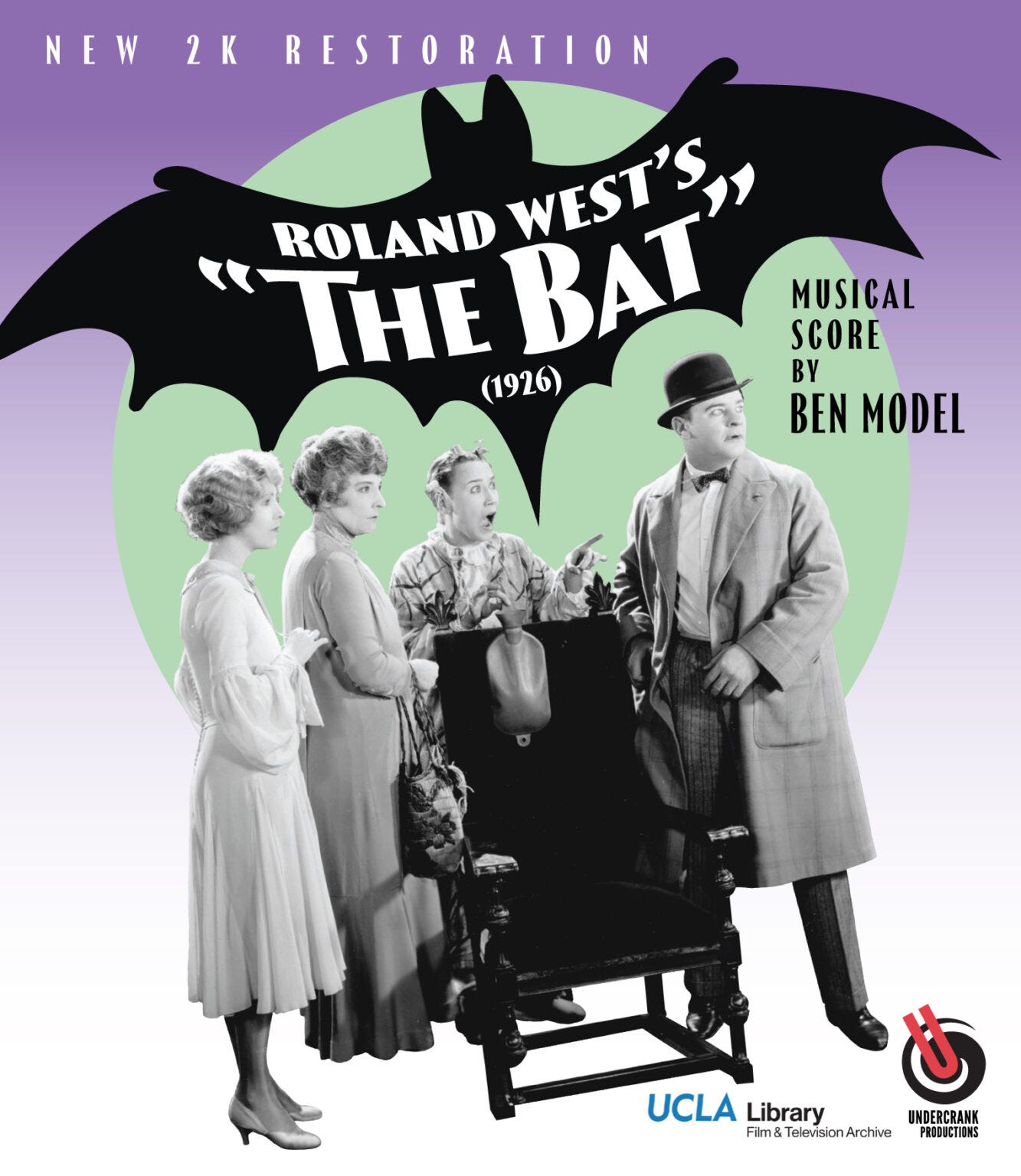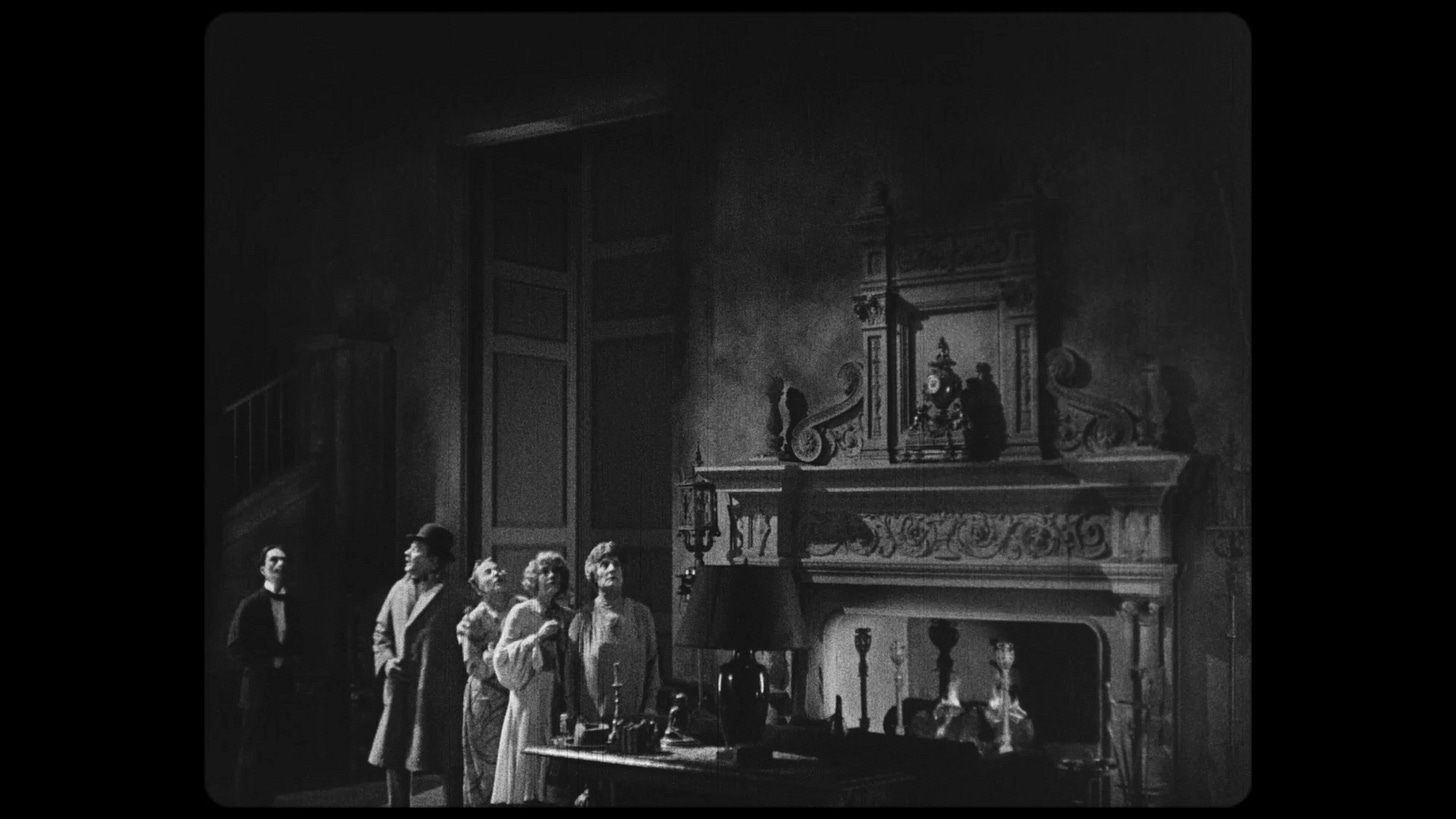The Silent-Movie Origins of Batman?
On "The Bat," the fun 1926 movie newly restored by Undercrank Productions
Just as a colleague sends me dark and disturbing words on the fact that few college students really read anything these days, I now presume to write something that you all will read and relish.
Ah, human folly!
But this post is for lovers of movie history, who are certainly smart and sharp readers.
Or they are even just lovers of the world’s greatest superhero, who has nothing intrinsically super about him — no “faster than a speeding bullet” for this guy!
Where did the Batman come from?
In 1926, Batman-creator Bob Kane was 11-years old, so it should be possible to trace what he saw and read, which fed into his successful creation, first introduced to the world in 1939.
One of those creative visions that the young Kane told us he watched and used just came out as a new 2K restoration. That is 1926’s “The Bat,” a silent film directed by Roland West.
And so here’s the cover of the new disc.
Full disclosure: I participated in the Kickstarter campaign for this disc, led by silent-movie composer and curator Ben Model. I even interviewed him a few years ago on my channel. I make no money from anything linked to or discussed here, and I have no skin in the game for anything monetary. Everything you read here is my honest view.
Mr. Model heads up Undercrank Productions, one of the better silent-movie preservation businesses around. I do love their discs.
So I went in on the Kickstarter campaign, sight unseen, having never watched “The Bat” myself. All I knew from Model was that he was restoring the movie from a rare 35mm print, and that Bob Kane had a Batman connection with it. It could’ve been money wasted.
It could’ve been, but it was not.
It turns out that “The Bat” is quite a fun silent movie, so fun that I might show it to my own kids. And I’m really hoping to see it enlarged on a massive screen at the next movie festival I attend.
Did it have obvious Batman roots? Well, the cover above might look like it’s hinting at Batman-marketing, with a spitting image of the Batman logo, the bat silohouette that’s used on Commissioner Gordon’s bat-beacon.
Yet “The Bat” does have this image in it, even the beacon itself.
So I can’t recommend “The Bat” enough to:
appreciators of silent films
Batman enthusiasts
people who like the movie “Clue”
aesthetes who want weird tonal combinations that no modern movie has even come close to achieving
This list above covers at least 80% of the people reading this — if you’re not a college student using AI to summarize for you.
So that would be you, gracious reader!
And Model’s restoration is lovely, a crisp and textured transfer, with a nice disc and packaging to justify even a blind purchase.
I just mentioned “Clue,” the 1985 screwball dark-comedy that a lot of people still love. I loved it as a kid, but then a recent rewatch left me feeling disappointed. Still, no matter what, Tim Curry is awesome in it. And nothing beats the ending of the movie, which is a choose-your-own-adventure finale.
To speak anachronistically, “The Bat” has shades of “Clue.” For one thing, despite being a “Whodunnit?” ala Agatha Christie, and despite a lot of Gothic-looking shots that seem to borrow from German Expressionism, it’s also just trying to be funny. The humor is the style of goofball farce, sometimes. It’s veering towards 1930s screwball comedies themselves.
Yet the dark textures are delightfully all over the place. The genre is the “dark old house” movie, a prototype of the infinite number of shock-horror films these days that are set in one cramped, walled-in location. “The Bat” features a massive house, which figures to be the site of a heist.
And who will try to pull off the heist? The Bat itself. Or himself, or herself.
Yep, the Bat here is a villain, not a caped vigilante ala Kane’s Batman. The movie invites us in its opening intertitle to figure out who The Bat is, and then we are supposed to tell no one else so that their viewing experience won’t be spoiled.
Early on, we witness the villainous robber known as The Bat, thieving and then darkly sneaking around at night. The plot features a worried household, with a maid setting a bear-trap for this would-be robber. The threat to the mansion featured in this Old-House movie is that its precious jewels will be robbed.
You can almost imagine the following ransom letter being reversed, sent by Batman himself, to The Joker and The Penguin. Here, again, it’s a robber inexplicably notifying his future victims of the heist to come, the sort of stupidity that delights in more light-hearted fare.
For the rest of the movie, various members of the house wander around trying to find and stop The Bat. Problem is that new people show up to the house, including a new gardener and a couple of policemen.
By the Law of Conservation of Characters, one of the people we are seeing in the movie must be The Bat. Just like “Clue,” or whatever detective story you prefer, go ahead and try to solve the mystery yourself!
No matter what, “The Bat” looks great to me, with the plot thick enough to pull me through. On first watch, on a good-sized screen, the Bluray transfer kept me arrested enough to recommend the movie to those who know they can tolerate the archaisms of silent pictures. That’s not most of my college students, but I dare say even they might find this to have interest.
I’ve no doubt that for a young Bob Kane, this movie proved influential. You’ve seen enough Batman imagery to attest to the relevance of these shots and clips in the visualized dark-knight material.
Postscript: as usual, my Youtube viewers did not disappoint. On the video review of “The Bat” I made, several comments were helpful in deepening suggestions and connections to/of the movie, including these:














